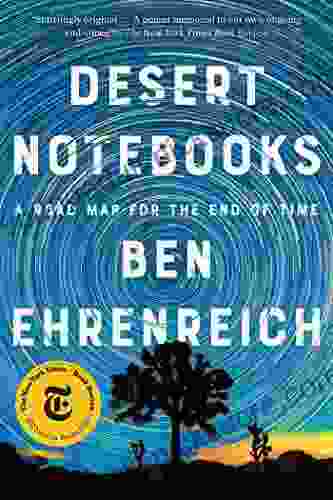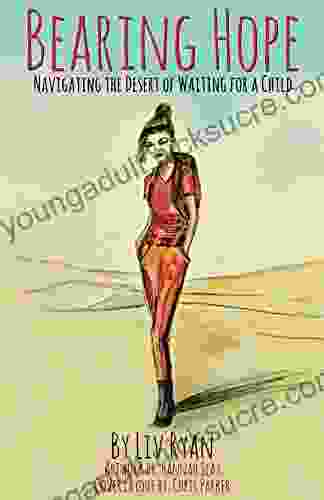The Road Map for the End of Time: Exploring the Eschatological Visions of History's Greatest Thinkers

: The Allure of the Apocalypse
Humankind has always been captivated by the concept of an impending end. From ancient mythologies to modern-day doomsday cults, the idea of a catastrophic to human history has permeated our collective psyche. Whether it be through divine retribution, cosmic cataclysm, or technological singularity, the notion of an ultimate reckoning has haunted our imagination. In this article, we embark on a comprehensive exploration of the roadmap for the end of time, delving into the eschatological visions of history's most influential thinkers.
Ancient Eschatological Beliefs
The earliest recorded eschatological beliefs emerged in the ancient Near East. The Sumerian Epic of Gilgamesh, dating back to 2100 BCE, recounts the hero's quest for immortality and his ultimate failure in an apocalyptic flood. Similarly, the ancient Egyptian Book of the Dead contains detailed descriptions of the afterlife and the judgment of souls. In ancient Greece, the philosopher Plato proposed the concept of the transmigration of souls, where individuals would reincarnate based on their actions in previous lives.
4 out of 5
| Language | : | English |
| File size | : | 14272 KB |
| Text-to-Speech | : | Enabled |
| Screen Reader | : | Supported |
| Enhanced typesetting | : | Enabled |
| X-Ray | : | Enabled |
| Word Wise | : | Enabled |
| Print length | : | 299 pages |
The Biblical Apocalypse
The eschatological tradition reached its most profound and influential expression in the Bible. The Book of Revelation, written by the Apostle John in the 1st century CE, provides an elaborate vision of the end times. According to the biblical narrative, the apocalypse will unfold through a series of cataclysmic events, including the opening of the seven seals, the sounding of the seven trumpets, and the pouring out of the seven bowls of God's wrath. The culmination of these events will be the return of Jesus Christ and the establishment of a new heaven and a new earth.
Early Christian Eschatology
Early Christian theologians embraced the biblical apocalypse as a literal and imminent event. The Church Fathers, such as Tertullian and Lactantius, believed that the end of the world was near and that Christ would return within their own lifetime. This eschatological fervor fueled the rise of apocalyptic movements and the belief in the imminent end of the Roman Empire.
Medieval Eschatological Perspectives
During the Middle Ages, eschatological beliefs became more complex and nuanced. The rise of scholasticism and the influence of Aristotle's philosophy led to a more rational and allegorical interpretation of the biblical apocalypse. Scholars such as Thomas Aquinas argued that the end of time would be both a cosmic event and a spiritual transformation, leading to the perfection of all creation.
Renaissance and Reformation Eschatology
The Renaissance and Reformation periods witnessed a resurgence of interest in ancient and biblical eschatological beliefs. Humanist scholars like Erasmus and Pico della Mirandola sought to reconcile classical wisdom with Christian faith, while Protestant reformers such as Martin Luther and John Calvin emphasized the importance of personal salvation and the imminent return of Christ.
Modern Eschatology
The Enlightenment and the rise of modern science ushered in a new era of eschatological thought. Philosophers and theologians began to question the literal interpretation of biblical prophecies and to explore more abstract and metaphorical understandings of the end times. The German philosopher Immanuel Kant argued that the apocalypse was not a physical event but a moral and spiritual crisis that would ultimately lead to the triumph of reason.
Contemporary Eschatological Perspectives
In the 20th and 21st centuries, eschatological beliefs have continued to evolve. The rise of nuclear weapons and the threat of global catastrophe have sparked concerns about the potential for a man-made apocalypse. Environmentalists have warned about the ecological consequences of human actions and the potential for an ecological collapse. Meanwhile, some futurists and transhumanists speculate about a technological singularity, where artificial intelligence surpasses human intelligence and potentially leads to unforeseen consequences.
The End as a Beginning
Despite the diverse perspectives and interpretations, one common thread that runs through eschatological thought is the notion of the end as a beginning. Whether it is the biblical new heaven and earth, the Platonic afterlife, or the transhumanist singularity, the idea of an ultimate end often suggests the possibility of renewal, transformation, and a new cosmic order.
: The Enduring Power of Eschatology
Throughout history, the concept of the end of time has continued to captivate our imagination and shape our beliefs and actions. From ancient mythologies to modern-day apocalyptic visions, the idea of an ultimate reckoning has provided both comfort and anxiety to countless generations. By exploring the eschatological visions of history's greatest thinkers, we gain a deeper understanding of the human condition and our enduring fascination with the unknown. Whether the end is imminent or distant, real or metaphorical, the roadmap for the end of time remains an ever-evolving and thought-provoking subject of contemplation.
4 out of 5
| Language | : | English |
| File size | : | 14272 KB |
| Text-to-Speech | : | Enabled |
| Screen Reader | : | Supported |
| Enhanced typesetting | : | Enabled |
| X-Ray | : | Enabled |
| Word Wise | : | Enabled |
| Print length | : | 299 pages |
Do you want to contribute by writing guest posts on this blog?
Please contact us and send us a resume of previous articles that you have written.
 Fiction
Fiction Non Fiction
Non Fiction Romance
Romance Mystery
Mystery Thriller
Thriller SciFi
SciFi Fantasy
Fantasy Horror
Horror Biography
Biography Selfhelp
Selfhelp Business
Business History
History Classics
Classics Poetry
Poetry Childrens
Childrens Young Adult
Young Adult Educational
Educational Cooking
Cooking Travel
Travel Lifestyle
Lifestyle Spirituality
Spirituality Health
Health Fitness
Fitness Technology
Technology Science
Science Arts
Arts Crafts
Crafts DIY
DIY Gardening
Gardening Petcare
Petcare Elizabeth Foss
Elizabeth Foss Gary B Meisner
Gary B Meisner Chef Maggie Chow
Chef Maggie Chow Bradley T Erford
Bradley T Erford Jim Prime
Jim Prime Jodi Shabazz
Jodi Shabazz Alberta Hawse
Alberta Hawse Andy Peloquin
Andy Peloquin Devaki Lakshmi
Devaki Lakshmi Jamie Kuykendall
Jamie Kuykendall Andy Schell
Andy Schell Andy Tyson
Andy Tyson Jonathan Gottschall
Jonathan Gottschall Andy Mitchell
Andy Mitchell Julia Reed
Julia Reed Rodney Castleden
Rodney Castleden Jenna Helwig
Jenna Helwig Sabbithry Persad Mba
Sabbithry Persad Mba Sharon Strand Ellison
Sharon Strand Ellison Roland A Boucher
Roland A Boucher Oliver Burkeman
Oliver Burkeman Elizabeth Kaledin
Elizabeth Kaledin Angelo Tropea
Angelo Tropea Viviana Altuve
Viviana Altuve Thomas Gilovich
Thomas Gilovich Jessica Jung
Jessica Jung Chris Chelios
Chris Chelios Christopher O Kennon
Christopher O Kennon Stephen Cheney
Stephen Cheney G K Derosa
G K Derosa Patrick Pickens
Patrick Pickens Bob Clouser
Bob Clouser Jessica Nordell
Jessica Nordell Rawdon Wyatt
Rawdon Wyatt Janet Menzies
Janet Menzies Angela Leslee
Angela Leslee Jorge Ramos Mizael
Jorge Ramos Mizael Howard Davis
Howard Davis Lucy Postgate
Lucy Postgate Jay Griffiths
Jay Griffiths Lois A Ritter
Lois A Ritter Pete Dunne
Pete Dunne Jeffrey T Richelson
Jeffrey T Richelson Capn Fatty Goodlander
Capn Fatty Goodlander Kathy Hoopmann
Kathy Hoopmann John Sonmez
John Sonmez John B Nici
John B Nici Stephen Jungmann
Stephen Jungmann Ron Jeffries
Ron Jeffries Frank Deford
Frank Deford Ruby Lang
Ruby Lang Andy Crowe
Andy Crowe Stacy Mccullough
Stacy Mccullough Raynor Winn
Raynor Winn Rebecca Hemmings
Rebecca Hemmings Angela Smith
Angela Smith Andy Jurinko
Andy Jurinko Ben Bleiweiss
Ben Bleiweiss Jay Matthews
Jay Matthews Ingrid S Clay
Ingrid S Clay Kristen S Kurland
Kristen S Kurland Mtg Editorial Board
Mtg Editorial Board Erin Moulton
Erin Moulton Steve Hindman
Steve Hindman Keith Crowley
Keith Crowley R E Burrillo
R E Burrillo Chris Santella
Chris Santella Aaron Wilson
Aaron Wilson George Johnson
George Johnson Charlotte Klaar Phd
Charlotte Klaar Phd Robyn Ryle
Robyn Ryle Stewart Shapiro
Stewart Shapiro Frederick Aardema
Frederick Aardema Irene Gut Opdyke
Irene Gut Opdyke Kevin Thomas
Kevin Thomas Ed Stafford
Ed Stafford Jeremy Klaff
Jeremy Klaff Nicole Smith
Nicole Smith Howell Raines
Howell Raines Daddilife Books
Daddilife Books Lin Wellford
Lin Wellford Bob Gordon
Bob Gordon M J Fievre
M J Fievre Marie Brennan
Marie Brennan Robyn Harding
Robyn Harding Tina Nelson
Tina Nelson Jenny Smith
Jenny Smith Gillian Price
Gillian Price Louis Martin
Louis Martin Tania N Shah
Tania N Shah Shane O Mara
Shane O Mara Jessica Wolstenholm
Jessica Wolstenholm Alessio Mangoni
Alessio Mangoni Jordan Summers
Jordan Summers Sylvester Nemes
Sylvester Nemes Karl Beecher
Karl Beecher Avinash Navlani
Avinash Navlani Teresa Parker
Teresa Parker Margaret Visser
Margaret Visser Joseph Phillips
Joseph Phillips Tiara Mcclure
Tiara Mcclure Sam Bleakley
Sam Bleakley Joel J Lerner
Joel J Lerner Johnson Egonmwan
Johnson Egonmwan Marie Myung Ok Lee
Marie Myung Ok Lee Tristan Higbee
Tristan Higbee Joy Williams
Joy Williams Mirabai Starr
Mirabai Starr Muako Maepa
Muako Maepa Leanne Ely
Leanne Ely Christina Reese
Christina Reese Sir Edmund Hillary
Sir Edmund Hillary Caryl Say
Caryl Say Michael Tomasello
Michael Tomasello Richard L Sites
Richard L Sites Jeff Fleischer
Jeff Fleischer Stephen Lynch
Stephen Lynch Jo May
Jo May Chip Heath
Chip Heath Guy Evans
Guy Evans Shenila Khoja Moolji
Shenila Khoja Moolji George Noory
George Noory Madison Lee
Madison Lee Richard Lemaster
Richard Lemaster Tovah Feldshuh
Tovah Feldshuh Tom Dymond
Tom Dymond Ashley P Martin
Ashley P Martin Karen Elliott House
Karen Elliott House Deborah Wall
Deborah Wall Andy Dowsett
Andy Dowsett Mark Synnott
Mark Synnott Angeline Boulley
Angeline Boulley Angela Thayer
Angela Thayer Lisa Marie Mercer
Lisa Marie Mercer Scott Turner
Scott Turner Bob Swope
Bob Swope Sandy Tolan
Sandy Tolan Eli Wilson
Eli Wilson Jason Hogan
Jason Hogan Robert Lindsay
Robert Lindsay Joe Berardi
Joe Berardi Bret A Moore
Bret A Moore Colby Coombs
Colby Coombs Connie Schultz
Connie Schultz Dhonielle Clayton
Dhonielle Clayton Rafael Gordillo Naranjo
Rafael Gordillo Naranjo Baby Professor
Baby Professor Yvonne Choquet Bruhat
Yvonne Choquet Bruhat Troy A Hill
Troy A Hill Tom Chatfield
Tom Chatfield Richard G Brown
Richard G Brown Lindsay Ford
Lindsay Ford L S Boos
L S Boos Kate Le Roux
Kate Le Roux Cynthia Nims
Cynthia Nims Carol Ann Gillespie
Carol Ann Gillespie Robin Benway
Robin Benway Thomas Golf
Thomas Golf Germano Dalcielo
Germano Dalcielo Rosie Daley
Rosie Daley Stuart Lawrence
Stuart Lawrence Michele Borba
Michele Borba Anna Rashbrook
Anna Rashbrook Jennifer Bohnet
Jennifer Bohnet Rod Powers
Rod Powers Jim Saccomano
Jim Saccomano Jules Brown
Jules Brown Robyn Wideman
Robyn Wideman Shreya Ramachandran
Shreya Ramachandran Jodi Picoult
Jodi Picoult Emily Souder
Emily Souder Dean Beaumont
Dean Beaumont Andy Farrell
Andy Farrell Rebecca Boggs Roberts
Rebecca Boggs Roberts Mark Verstegen
Mark Verstegen Scott Alan Johnston
Scott Alan Johnston Keylee C Hargis
Keylee C Hargis Richard Hibshman
Richard Hibshman Tirzah Price
Tirzah Price Rachel Hutt Phd
Rachel Hutt Phd Walter Beede
Walter Beede Scott Meyer
Scott Meyer Diana Nyad
Diana Nyad Lisa Preston
Lisa Preston Manik Joshi
Manik Joshi Milton Roth
Milton Roth Madeleine Roux
Madeleine Roux Christian Wiggins
Christian Wiggins Michael V Uschan
Michael V Uschan Kim Foley Mackinnon
Kim Foley Mackinnon Rebecca P Cohen
Rebecca P Cohen Petros Efthymiou
Petros Efthymiou Jeffrey Bernstein
Jeffrey Bernstein Nicholas Epley
Nicholas Epley Jeanne Godfrey
Jeanne Godfrey Patrick Ejeke
Patrick Ejeke James Quinn
James Quinn Mometrix
Mometrix Wynne Foster
Wynne Foster Rachel Connelly
Rachel Connelly Ben Ehrenreich
Ben Ehrenreich Cap N Fatty Goodlander
Cap N Fatty Goodlander Third Edition Kindle Edition
Third Edition Kindle Edition Mark Wells
Mark Wells Ron Douglas
Ron Douglas Lidia Bastianich
Lidia Bastianich Margaret M Quinlan
Margaret M Quinlan Andrea Lankford
Andrea Lankford Jane M Healy
Jane M Healy Stefanie K Johnson
Stefanie K Johnson Robin Yocum
Robin Yocum Kristen Jervis Cacka
Kristen Jervis Cacka Rufus Estes
Rufus Estes Lynn Palm
Lynn Palm Derek M Steinbacher
Derek M Steinbacher Jonah Lehrer
Jonah Lehrer Judith S Beck
Judith S Beck Adam Skolnick
Adam Skolnick Christina Hillsberg
Christina Hillsberg Schoolhouse Heaven
Schoolhouse Heaven Sandra Steingraber
Sandra Steingraber Leonard Lueras
Leonard Lueras Richard Lee Byers
Richard Lee Byers Warren St John
Warren St John Rebecca Eanes
Rebecca Eanes Mercedes Pollmeier
Mercedes Pollmeier Stefan Hunziker
Stefan Hunziker Angelina J Steffort
Angelina J Steffort Susan Burton
Susan Burton Robin Ray Green
Robin Ray Green Humberto G Garcia
Humberto G Garcia Kevin Hunter
Kevin Hunter Alex Wolf
Alex Wolf Jeffrey Lee
Jeffrey Lee Gerard Siggins
Gerard Siggins Mark Shepherd
Mark Shepherd W Todd Woodard
W Todd Woodard Angela C Wu
Angela C Wu Tim Thayne
Tim Thayne William Bryant Logan
William Bryant Logan Chuck Weikert
Chuck Weikert Tovar Cerulli
Tovar Cerulli Karl E Peace
Karl E Peace Harold S Koplewicz
Harold S Koplewicz Jon Ronson
Jon Ronson United States Government Us Army
United States Government Us Army Bill Schneider
Bill Schneider Marc Charles
Marc Charles Robert Dudley
Robert Dudley Dr Eva Beaulieu
Dr Eva Beaulieu Rebecca Serle
Rebecca Serle Tigran Bagdasaryan
Tigran Bagdasaryan J D Swanson
J D Swanson Stephen Grossberg
Stephen Grossberg Ashley Rickards
Ashley Rickards Carlo Rovelli
Carlo Rovelli Carlos Acevedo
Carlos Acevedo Emily Nielson
Emily Nielson Siena Cherson Siegel
Siena Cherson Siegel Rashaun Johnson
Rashaun Johnson Ellen J Langer
Ellen J Langer Chanel Craft Tanner
Chanel Craft Tanner Ariel Henley
Ariel Henley Charney Herst
Charney Herst Dave Gray
Dave Gray Nick Bradley
Nick Bradley Harry Fairhead
Harry Fairhead Peter Townsend
Peter Townsend Greg Prato
Greg Prato Dawn Griffiths
Dawn Griffiths Richard Bate
Richard Bate Jeffrey Thurston
Jeffrey Thurston Jenna Blough
Jenna Blough Bradley Charbonneau
Bradley Charbonneau Donna Helen Crisp Jd Msn Rn Pmhcns Bc
Donna Helen Crisp Jd Msn Rn Pmhcns Bc James M Johnston
James M Johnston Judea Pearl
Judea Pearl Emiko Jean
Emiko Jean Joseph Mazur
Joseph Mazur Massimo Florio
Massimo Florio Kari Marie Norgaard
Kari Marie Norgaard Stephanie Land
Stephanie Land Kenneth R Ginsburg
Kenneth R Ginsburg Christopher Nyerges
Christopher Nyerges Judith Hoare
Judith Hoare Arlin Smith
Arlin Smith Ben Campbell
Ben Campbell Mitch Horowitz
Mitch Horowitz Erich Fromm
Erich Fromm Linda Sivertsen
Linda Sivertsen Angela Eckhoff
Angela Eckhoff Kristina Statler
Kristina Statler D M Davis
D M Davis Hourly History
Hourly History Ryan Bow
Ryan Bow Donna Mott
Donna Mott Mark Lester
Mark Lester William E Hearn
William E Hearn Rob Willson
Rob Willson Karen Sternheimer
Karen Sternheimer Wendy Rosenoff
Wendy Rosenoff Florian Freistetter
Florian Freistetter Robert Zubek
Robert Zubek Cate Tiernan
Cate Tiernan David E Jones
David E Jones Gregory J Davenport
Gregory J Davenport T L Payne
T L Payne Neil Hawkesford
Neil Hawkesford Richard A Muller
Richard A Muller Paul Cobley
Paul Cobley John Samuel Barnett
John Samuel Barnett Ruth Benedict
Ruth Benedict Ken Dryden
Ken Dryden Ray Walker
Ray Walker Dave Smith
Dave Smith Donald N Yates
Donald N Yates Shalabh Aggarwal
Shalabh Aggarwal Barak Ariel
Barak Ariel Mary Pipher
Mary Pipher Jim Posewitz
Jim Posewitz Tj Faultz
Tj Faultz Peter Gibson
Peter Gibson George Megre
George Megre David Herres
David Herres Marilyn Burgos
Marilyn Burgos Mark Remy
Mark Remy Meg Long
Meg Long Murtaza Haider
Murtaza Haider Joshua Clark
Joshua Clark Pete Sampras
Pete Sampras Neveen Musa
Neveen Musa Peter Finch
Peter Finch Dan Ariely
Dan Ariely Miranda Green
Miranda Green Stephen Rea
Stephen Rea Ted Sandling
Ted Sandling Bernd Heinrich
Bernd Heinrich Eliot Schrefer
Eliot Schrefer Tim Hannigan
Tim Hannigan Dwight E Neuenschwander
Dwight E Neuenschwander Robb Manning
Robb Manning Mark Rosenman
Mark Rosenman Belinda Norton
Belinda Norton Seth Lloyd
Seth Lloyd Catherine Mccord
Catherine Mccord Matthew D Dewar
Matthew D Dewar Scott Stillman
Scott Stillman Kent David Kelly
Kent David Kelly Lawrence Goldstone
Lawrence Goldstone Kathy Freston
Kathy Freston Elly Molina
Elly Molina Eugene P Northrop
Eugene P Northrop Jeff Mach
Jeff Mach Mark Kernion
Mark Kernion Hajime Isayama
Hajime Isayama Angelo Lowery
Angelo Lowery Douglas Henderson Jr
Douglas Henderson Jr Tim O Connor
Tim O Connor Samuel B Green
Samuel B Green Roger Craig
Roger Craig Rick Vaive
Rick Vaive Patrick M Lencioni
Patrick M Lencioni Robert Urban
Robert Urban Angelo Chiari
Angelo Chiari Yuu Tanaka
Yuu Tanaka Eric Schmitz
Eric Schmitz William Ayers
William Ayers Donald R Prothero
Donald R Prothero Dave Duncan
Dave Duncan Christian Heath
Christian Heath Angela Stancar Johnson
Angela Stancar Johnson Joe Peta
Joe Peta Latonya J Trotter
Latonya J Trotter Elizabeth Hunter
Elizabeth Hunter Nicholas Jubber
Nicholas Jubber Kim West
Kim West Barry Pickthall
Barry Pickthall Ryan Beck
Ryan Beck Nathaniel Rich
Nathaniel Rich Caspar Melville
Caspar Melville S L Macgregor Mathers
S L Macgregor Mathers Lutz Hanseroth
Lutz Hanseroth Tim Larkin
Tim Larkin Kat Anderson
Kat Anderson David Graeber
David Graeber Natalie Rhodes
Natalie Rhodes Laura Bogen
Laura Bogen Robert E Stake
Robert E Stake Danil Zburivsky
Danil Zburivsky Nikki Ace
Nikki Ace Kim Dragoner
Kim Dragoner Samir P Desai
Samir P Desai Joan Jacobs Brumberg
Joan Jacobs Brumberg Kyle Graves
Kyle Graves Daniel Friedmann
Daniel Friedmann Ryan D Agostino
Ryan D Agostino Tara Sim
Tara Sim Phil Burt
Phil Burt Angel Burns
Angel Burns Beth A Leonard
Beth A Leonard David C Keehn
David C Keehn Serena B Miller
Serena B Miller Jerry Toner
Jerry Toner Thais Nye Derich
Thais Nye Derich David Goodman
David Goodman Rodney Paul
Rodney Paul Sam Fury
Sam Fury Israelin Shockness
Israelin Shockness Nicholas D Kristof
Nicholas D Kristof Rachel Kowert
Rachel Kowert Cory Mortensen
Cory Mortensen Dan Heath
Dan Heath Mark J Musser
Mark J Musser Cheryl Alkon
Cheryl Alkon Ellen Frank
Ellen Frank Tea Rozman Clark
Tea Rozman Clark Lynn Lyons
Lynn Lyons Emma Dalton
Emma Dalton Kathryn Miles
Kathryn Miles Afra J Zomorodian
Afra J Zomorodian Fredrik Backman
Fredrik Backman Rebecca Solnit
Rebecca Solnit George E Hein
George E Hein Warren Sande
Warren Sande Angel Millar
Angel Millar Tanya Lee Stone
Tanya Lee Stone Miles Olson
Miles Olson K Moriyasu
K Moriyasu Katrina Cope
Katrina Cope Michael Driscoll
Michael Driscoll Mandee Heller Adler
Mandee Heller Adler Brian Cain
Brian Cain Wayne Mcghie
Wayne Mcghie Otto Rahn
Otto Rahn Laura Hillman
Laura Hillman Liv Ryan
Liv Ryan Matt Vincent
Matt Vincent Margaret Jordan Halter
Margaret Jordan Halter Violet White
Violet White Michael Anthony
Michael Anthony Mark W Steege
Mark W Steege T R Fehrenbach
T R Fehrenbach Tom Allen
Tom Allen Forrest Maready
Forrest Maready Tim Macwelch
Tim Macwelch David Kinney
David Kinney John C Maxwell
John C Maxwell Diana Winston
Diana Winston Lee Cronk
Lee Cronk Keith Elliot Greenberg
Keith Elliot Greenberg John Geiger
John Geiger Joyce Yang
Joyce Yang William D Lopez
William D Lopez Martin Volken
Martin Volken Kevin J Gaston
Kevin J Gaston Robert Kirk
Robert Kirk Mike Chambers
Mike Chambers Andy Puddicombe
Andy Puddicombe Johnny Molloy
Johnny Molloy Dennis Rainey
Dennis Rainey Kelly Corrigan
Kelly Corrigan
Light bulbAdvertise smarter! Our strategic ad space ensures maximum exposure. Reserve your spot today!

 Tom ClancyUnveiling the Enigmatic and Seductive World of Robyn Harding: The Arrangement...
Tom ClancyUnveiling the Enigmatic and Seductive World of Robyn Harding: The Arrangement...
 Ralph EllisonMastering the Commercial Driver License Exam: Comprehensive Review and Cdl...
Ralph EllisonMastering the Commercial Driver License Exam: Comprehensive Review and Cdl...
 Diego BlairLove the Dead: Angelo Chiari, the Photographer Who Captured the Beauty of the...
Diego BlairLove the Dead: Angelo Chiari, the Photographer Who Captured the Beauty of the...
 Dwayne MitchellCold the Night, Fast the Wolves: A Haunting Tale of Darkness and Redemption
Dwayne MitchellCold the Night, Fast the Wolves: A Haunting Tale of Darkness and Redemption Robert HeinleinFollow ·15.1k
Robert HeinleinFollow ·15.1k James HayesFollow ·14.1k
James HayesFollow ·14.1k Alex FosterFollow ·16.3k
Alex FosterFollow ·16.3k Rex HayesFollow ·6.5k
Rex HayesFollow ·6.5k Leslie CarterFollow ·6.1k
Leslie CarterFollow ·6.1k Luke BlairFollow ·15.3k
Luke BlairFollow ·15.3k Derek BellFollow ·5.2k
Derek BellFollow ·5.2k Joseph ConradFollow ·15.1k
Joseph ConradFollow ·15.1k
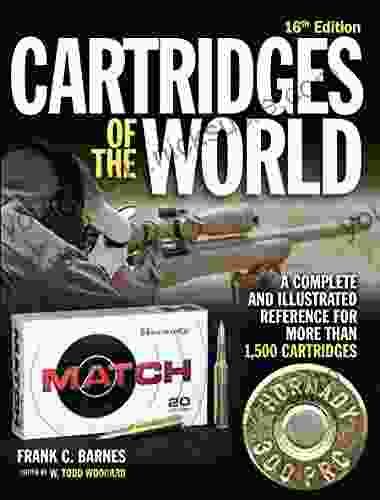
 Devon Mitchell
Devon MitchellDelve into the Comprehensive World of Cartridges: A...
In the realm of firearms, cartridges stand...
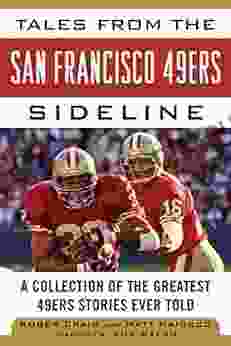
 Joseph Conrad
Joseph ConradTales From The San Francisco 49ers Sideline: A Look...
The San Francisco 49ers are one of the most...

 Ervin Bell
Ervin BellArcGIS Desktop 10: A Comprehensive GIS Tutorial for...
Geographic information...

 Reed Mitchell
Reed MitchellPhysiology Pretest Self Assessment And Review 14th...
Accurately gauge your physiology knowledge and...
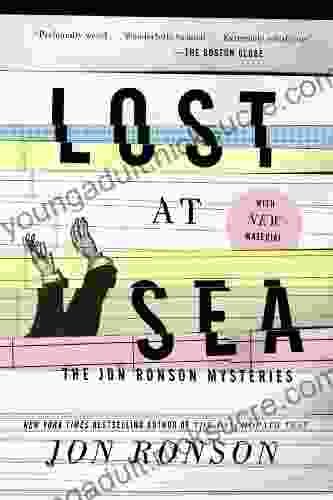
 Devin Ross
Devin RossLost At Sea: The Unbelievable True Story of the Jon...
In 2009, journalist Jon Ronson set out to...
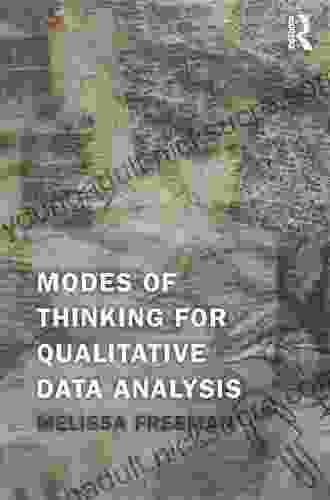
 Shane Blair
Shane BlairModes of Thinking for Qualitative Data Analysis
Qualitative data analysis is a complex...
4 out of 5
| Language | : | English |
| File size | : | 14272 KB |
| Text-to-Speech | : | Enabled |
| Screen Reader | : | Supported |
| Enhanced typesetting | : | Enabled |
| X-Ray | : | Enabled |
| Word Wise | : | Enabled |
| Print length | : | 299 pages |


